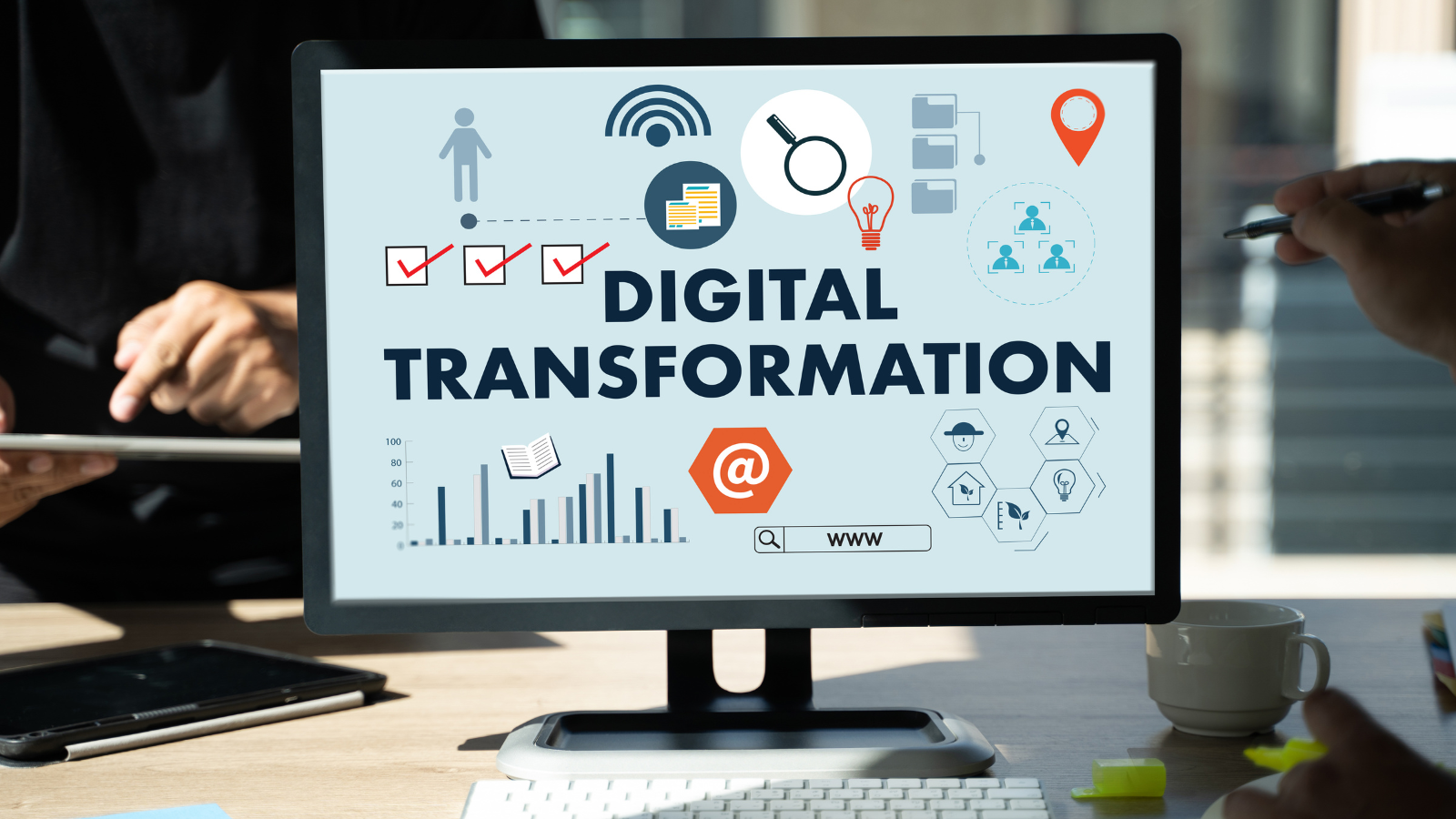
Introduction: The Digital Pulse of Healthcare
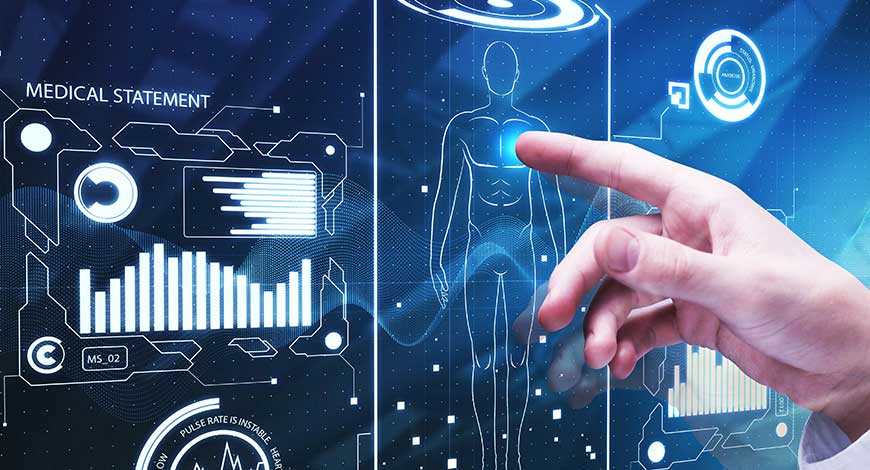
Welcome to 2025 — a time when technology has evolved from being a support system in
healthcare to becoming its very backbone. From telehealth consultations replacing clinic
queues to wearable devices predicting heart attacks before they occur, we are
witnessing a complete digital revolution in healthcare. This transformation, often referred to
as Digital Health Transformation, is the strategic integration of digital technologies to
enhance healthcare delivery, access, and outcomes.
But it isn’t just about tools and apps. It’s about empowering patients, enhancing doctor
capabilities, reducing healthcare costs, and making health systems resilient. In this
blog, we’ll explore how and why digital health is booming in 2025, the key technologies
driving this change, the global market demand, ethical concerns, and how future-ready
professionals can ride this wave.
What is Digital Health Transformation?
Digital Health Transformation refers to the comprehensive adoption and integration of
digital tools into healthcare systems and services. This includes:
● Telehealth & Virtual Care
● Mobile Health Apps (mHealth)
● Wearable Tech & Remote Monitoring Devices
● Artificial Intelligence (AI) & Machine Learning (ML)
● Electronic Health Records (EHRs) & Cloud Infrastructure
● IoT in Healthcare (IoMT)
● Blockchain for Health Data Security
● Digital Therapeutics (DTx)
● Health Analytics & Predictive Modeling
The aim? To enhance patient engagement, reduce operational inefficiencies, support
data-driven decisions, and make healthcare more accessible, personalized, and
cost-effective.
🚀 Why is Digital Health Growing So Rapidly in 2025?
✅ 1. Post-COVID Digital Mindset Shift
The COVID-19 pandemic rewired the global mindset. Both patients and providers now see
digital-first care as the default, not the alternative. In India alone, telehealth consultations
rose from 3 million in 2019 to over 300 million in 2024.
✅ 2. Chronic Disease Epidemic
Over 60% of global deaths are due to chronic conditions like diabetes, heart disease, and
cancer. Digital tools enable real-time monitoring, preventive care, and behavioral
nudges to manage such diseases proactively.
✅ 3. Aging Population & Healthcare Worker Shortage
By 2025, nearly 25% of the population in Europe and Japan is over 60. Simultaneously,
there’s a global shortage of doctors and nurses. Digital systems help scale care delivery via
AI triage bots, tele-nursing, and remote diagnostics.
✅ 4. Data as the New Vaccine
From personal genomics to hospital-level patient analytics, data is enabling more
precise, predictive, and preventive healthcare. This data-centric approach is revolutionizing
diagnosis, treatment, and population health management.
✅ 5. Consumer-Led Healthcare
In 2025, people expect to manage their health like they manage their bank accounts —
mobile-first, personalized, and on-demand. This ‘consumerization’ of healthcare is
accelerating the need for smarter digital services.
📊 Global Market Demand and Industry Trends
🌐 Market Size Projections:
● Global digital health market will hit $660+ billion by end of 2025
● Wearable health tech will exceed $175 billion
● Global telemedicine market will surpass $220 billion
🌎 Who’s Driving the Demand?
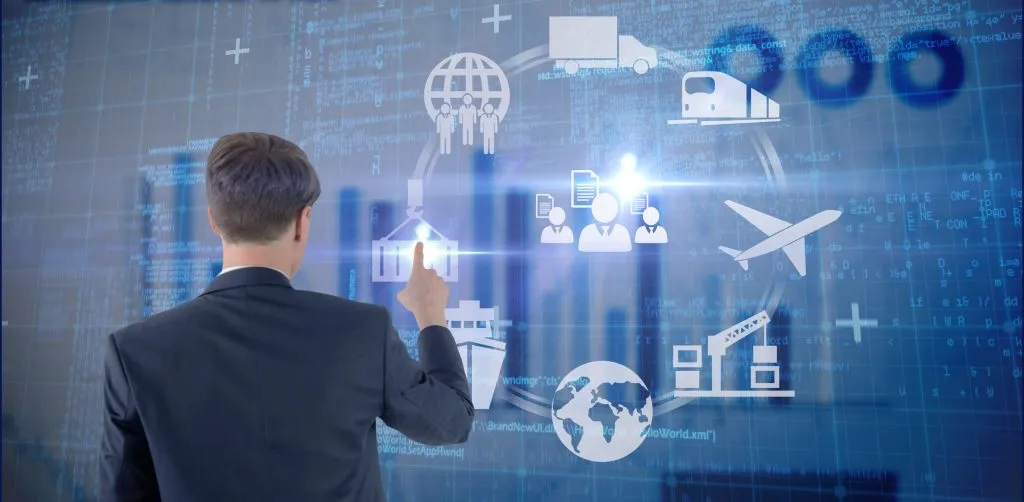
● Governments: Public health agencies are digitizing national healthcare records,
pandemic response systems, and universal access tools (e.g., India’s ABDM)
● Startups: HealthTech is one of the hottest verticals for investment, with $24B raised
globally in 2024
● Big Tech: Google, Apple, Amazon, and Microsoft are all building healthcare arms
● Hospitals: Transitioning to smart hospital ecosystems with connected devices and
cloud-based EHRs
🤝 Cross-Industry Synergies:
● Retail + Health: Pharmacies offer virtual clinics (e.g., 1mg, CVS Health)
● Fitness + Health: Devices like Fitbit, WHOOP, and Apple Watch detect AFib and
sleep apnea
● Insurance + Health: Usage-based insurance linked to activity and heart rate
🏥 Key Technologies Transforming
Healthcare in 2025
The healthcare industry is undergoing a dramatic evolution, driven by emerging technologies
that not only improve patient outcomes but also enhance healthcare efficiency, accessibility,
and personalization. Let’s delve deeper into each transformative technology reshaping
modern healthcare:
🌌 1. Telehealth: Healthcare Beyond Boundaries
What It Is: Telehealth enables remote consultations using digital communication tools such
as video calls, messaging, and integrated patient portals.
How It Works:
● Patients book virtual appointments through platforms like Practo, Teladoc Health,
Microsoft Teams Healthcare, or national telehealth portals.
● Doctors can evaluate symptoms, offer prescriptions, and conduct follow-ups — all
from their homes or clinics.
● Integration with electronic medical records (EMRs) allows seamless access to patient
history.
Current Usage in 2025:
● Over 70% of outpatient visits in Tier 2 and Tier 3 cities are conducted virtually.
● Rural India has witnessed over 3x increase in teleconsultations post-integration with
the Ayushman Bharat Digital Mission (ABDM).
● In the West, AI triage bots pre-screen patients before connecting them to live
physicians.
Key Benefits:
● Reduces hospital burden and patient wait times.
● Provides access to healthcare in remote or underserved regions.
● Cost-effective for both providers and patients.
🤖 2. AI in Diagnosis & Decision Support: Augmented
Intelligence for Faster Care
What It Is: Artificial Intelligence (AI) systems are trained to detect diseases, analyze
patterns, and assist doctors with evidence-based recommendations.
Applications in 2025:
● Radiology: AI models scan X-rays, MRIs, and CT scans to identify conditions like
lung cancer, pneumonia, brain tumors, etc., with high accuracy.
● Dermatology & Ophthalmology: Tools like Google’s DeepMind help detect diabetic
retinopathy and skin cancers.
● Voice & NLP-based Diagnostics: AI listens to cough patterns or speech changes to
detect diseases like Parkinson’s or COVID-related complications.
Benefits:
● Enables early diagnosis even before symptoms escalate.
● Reduces misdiagnosis and supports clinical decision-making.
● Works as a virtual assistant for overburdened doctors, especially in emergency triage
and radiology.
📱 3. Wearables & IoMT (Internet of Medical Things):
Always-On Health Tracking
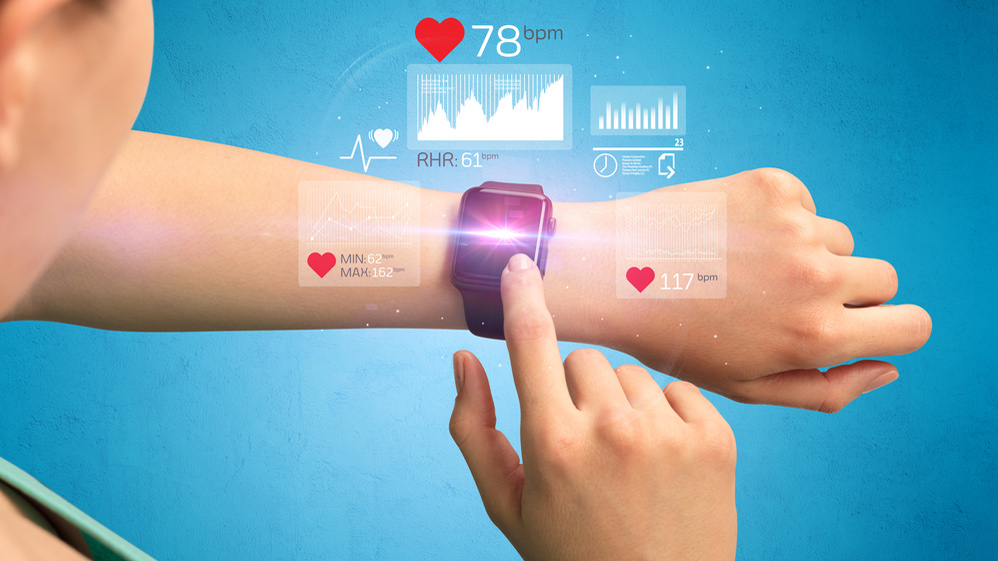
What It Is: Smart health devices that continuously monitor and transmit real-time data to
doctors, caregivers, or cloud systems.
Popular Devices in 2025:
● Smartwatches (Apple Watch, Fitbit Sense, Galaxy Watch): Track heart rate, ECG,
blood oxygen, sleep, and stress levels.
● Glucose Monitors (Dexcom G7, FreeStyle Libre 3): Offer continuous glucose
monitoring without finger pricks.
● Smart Inhalers: Monitor asthma triggers and medication usage.
● ECG patches and BP cuffs connected to mobile apps.
How It Works:
● These devices collect data and sync with cloud databases or mobile apps.
● Alerts are sent to doctors in case of abnormalities.
Benefits:
● Supports chronic care management (diabetes, hypertension, COPD).
● Encourages preventive health by catching issues early.
● Integrates with AI models for predictive analytics.
🛠 4. Cloud & Interoperability: Making Patient Data
Seamless and Secure
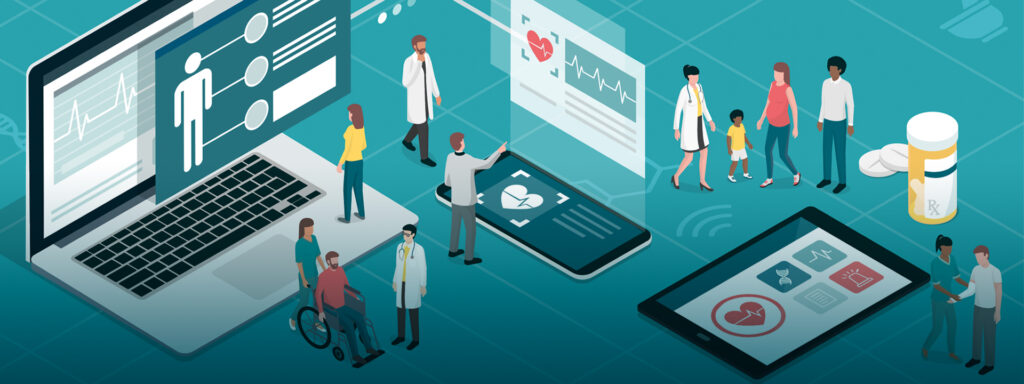
What It Is: Storing and sharing patient data across healthcare providers using secure cloud
platforms that comply with regulations like HIPAA and India’s DPDPA.
Usage Examples:
● Hospital Information Systems (HIS) are now cloud-native, enabling access to
patient records from any authorized location.
● Lab results, imaging reports, prescriptions — all stored in Electronic Health
Records (EHRs) accessible via mobile or web apps.
● API-based data exchange ensures interoperability between diagnostic labs,
pharmacies, and hospitals.
Benefits:
● Reduces diagnostic errors and unnecessary repeat tests.
● Enables faster and more informed treatment decisions.
● Empowers patients to access their own records across platforms.
🔐 5. Blockchain for Medical Data: The New Standard in
Privacy & Transparency
What It Is: Blockchain is a decentralized, tamper-proof ledger that records and verifies
transactions securely — now being applied to health records.
How It Works:
● Each patient has a unique ID linked to their health data.
● Data transactions (updates, access, sharing) are time-stamped and recorded
immutably.
● Patients give explicit consent to share data with insurance, researchers, or hospitals.
Benefits:
● Prevents unauthorized data access and breaches.
● Ensures data integrity, especially for insurance claims and clinical trials.
● Empowers data ownership — the patient controls who sees their health history.
Use Cases:
● Clinical Research Registries ensuring authentic and tamper-proof patient
participation.
● Insurance Verification using smart contracts that auto-validate claims.
● Health Information Exchange (HIE) across state or country lines securely.
🚀 6. Robotics & Digital Surgery: Precision Without
Boundaries
What It Is: Robotic systems assist or perform surgeries with incredible accuracy, often
minimally invasive, resulting in shorter recovery times.
Key Technologies in 2025:
● Da Vinci Surgical System (latest generation): Used in urology, cardiac, and
gynecologic surgeries.
● Telerobotic Surgery: Surgeons operate remotely using robotic tools — especially
helpful in war zones or remote areas.
● Robotic Rehabilitation: Machines assist in patient recovery and physical therapy.
Benefits:
● Reduces surgical complications and recovery times.
● Facilitates complex surgeries in areas lacking expert surgeons.
● Enhances consistency and reduces fatigue-based errors.
🎓 7. AR/VR in Medical Training & Therapy: Learning
and Healing in 3D

What It Is: Augmented Reality (AR) and Virtual Reality (VR) are immersive tools that
replicate real-world scenarios for training or therapeutic use.
Use in Medical Education:
● Virtual Cadavers: Students learn anatomy without dissection.
● AR-Guided Surgery: Real-time overlay of patient anatomy helps surgeons avoid
nerves or arteries.
● Emergency Simulations: Doctors train in VR-based emergency rooms.
Use in Mental Health & Therapy:
● VR Exposure Therapy: Treats PTSD, phobias, and anxiety disorders by simulating
triggers in a controlled space.
● Autism Therapy: Improves social skills using interactive virtual environments.
● Pain Distraction: VR reduces perception of pain in chronic conditions or during burn
treatments.
Benefits:
● Makes training scalable, repeatable, and immersive.
● Provides risk-free learning environments.
● Supports digital therapeutics as part of clinical protocols.
Each of these technologies plays a critical role in redefining healthcare for 2025 and
beyond — not just by making it more digital, but by making it more human-centric,
predictive, and equitable.
Let me know if you want this section formatted into a PDF, infographic, or social media
carousel.
⚡ Real Use Cases in 2025
● 🚑 Apollo Hospitals in India uses AI-powered triage for 25% of incoming OPD
patients
● 🌐 WHO and UNICEF deploy telehealth kiosks in Africa with IoT diagnostic kits
● 🩸 Mental health platforms like Wysa and Mindstrong offer AI-based CBT via
chatbots
● ⌚ WHOOP 5.0 bands help athletes and workers monitor strain, sleep, and heart
rate variability
● 🛌 Insurance companies in Europe offer premium discounts for wearable
compliance
● 🤷 ChatGPT-based virtual nurses now handle patient education and follow-ups.
Ethical & Regulatory Implications
⛔ Privacy & Consent
Data security is the biggest concern. In 2025:
● India’s Digital Personal Data Protection Act (DPDPA) mandates explicit consent
for health data
● GDPR remains the gold standard in Europe
● Zero-trust architectures are being adopted
⚡ Algorithmic Bias
AI must be trained on diverse, inclusive data or risk excluding vulnerable populations.
Gender, ethnicity, and socioeconomic bias in algorithms is now under scrutiny.
🧵 Informed Self-Diagnosis
While digital tools empower, misinformation and self-diagnosis errors are rising.
Education and responsible tech design are essential.
⚖️ Accountability
Who is liable for an AI misdiagnosis? Laws are catching up, but ethical design and
transparency are key to future acceptance.
🚀 The Road Ahead: What Will Digital Health Look Like
by 2030?
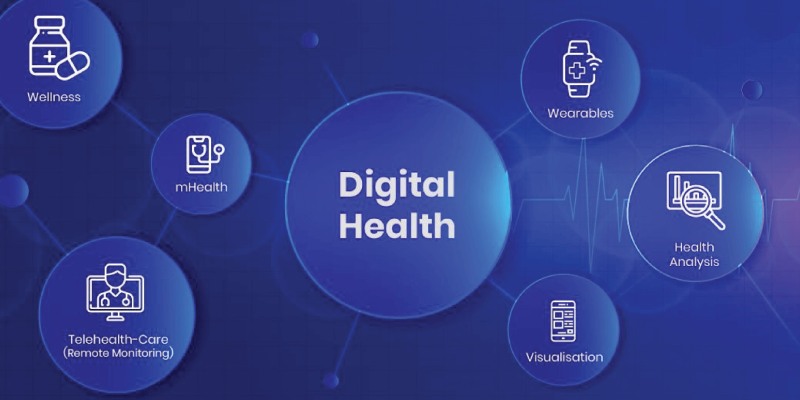
● 🔹 Hyper-personalized therapies based on genetics, microbiomes, and lifestyle
● 🔹 Smart hospitals fully run on AI and IoT, with robotic orderlies and predictive
logistics
● 🔹 Quantum computing unlocking new drug discovery
● 🔹 Global interoperable EHR systems using blockchain
● 🔹 AI co-doctors integrated into public health infrastructure
● 🔹 Mental wellness integrated into daily wearable routines
🤝 How Pinaki IT Hub Empowers the Future of Digital
Health
At Pinaki IT Hub, we are not just training professionals — we are shaping the digital
architects of tomorrow’s healthcare. In an age where medicine meets machine intelligence,
we provide cutting-edge, industry-aligned training that prepares students and
professionals to innovate, secure, and revolutionize healthcare systems across the globe.
Through global partnerships, hands-on projects, and mentorship from domain experts,
our learners emerge job-ready and future-proof. Here’s how we do it:
✨ AI for Healthcare & Diagnostics
Artificial Intelligence is transforming healthcare delivery, from diagnosing diseases to
predicting patient outcomes.
🔹 At Pinaki IT Hub, we offer specialized modules on:
● Medical imaging analysis using AI (e.g., X-rays, MRIs, CT scans)
● Predictive analytics for early disease detection
● Natural Language Processing (NLP) for clinical documentation
● Chatbots and virtual health assistants for patient engagement
📊 Learners work on real datasets, applying algorithms to solve actual diagnostic
challenges, ensuring they’re ready for roles in healthtech startups, hospitals, or AI labs.
✨ Cybersecurity for EHR Systems

With patient data going digital, Electronic Health Records (EHRs) are prime targets for
cyber threats.
🔐 Our training ensures proficiency in:
● HIPAA compliance and global data privacy regulations
● Securing cloud-based EHR platforms
● Penetration testing & vulnerability assessments
● Identity & access management in healthcare IT
🛡 We simulate hospital IT environments where learners defend against real-world
breaches, preparing them for high-demand roles in health cybersecurity.
✨ Cloud & DevOps for Hospital IT Infrastructure
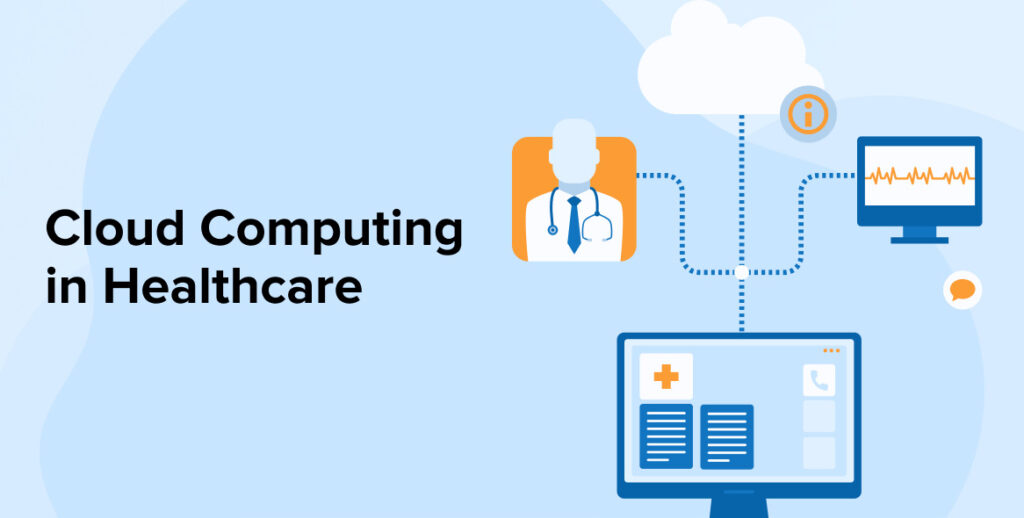
Hospitals need scalable, agile IT systems to manage everything from patient records to
smart ICU systems.
☁️ We train learners to:
● Deploy cloud-native health applications (AWS, Azure, GCP)
● Implement CI/CD pipelines for rapid and secure healthcare app updates
● Monitor systems with DevOps tools like Kubernetes, Docker, Jenkins
● Ensure high availability and disaster recovery in critical systems
🏥 Our hands-on projects include setting up a mock hospital’s cloud infra — giving learners
a real taste of healthcare IT operations.
✨ IoT & Wearable Device Integration
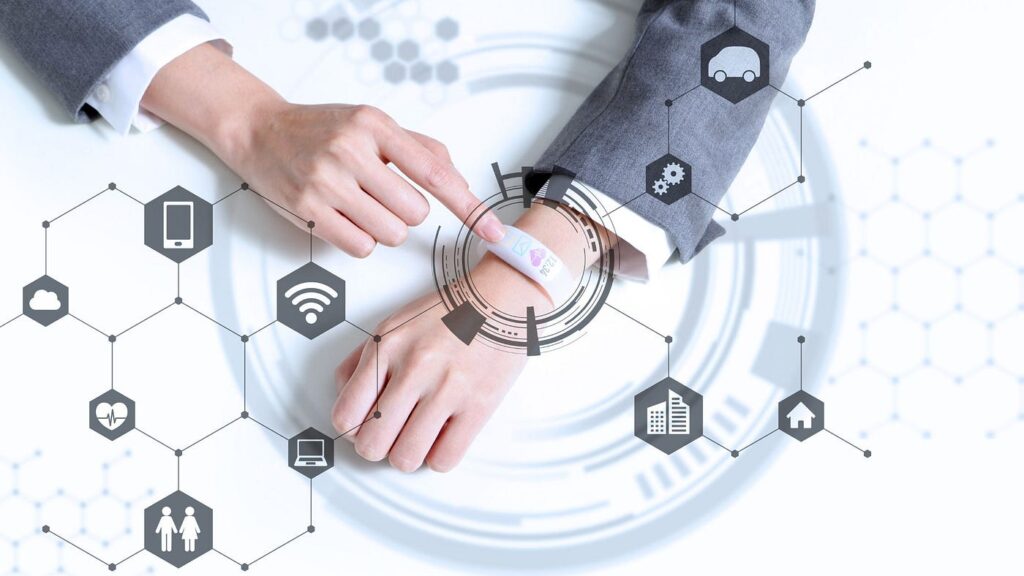
From heart rate monitors to remote glucose sensors, wearables and IoT devices are
redefining patient care and chronic disease management.
📡 At Pinaki, students learn to:
● Design and build IoT-enabled health monitoring systems
● Integrate data streams from wearables into central dashboards
● Use Edge computing for real-time analysis
● Apply data encryption and secure protocols for device communication
🧠 Training is aligned with real applications like smart ambulances, post-surgical patient
monitoring, and elderly care solutions
✨ Blockchain for Health Data Security
Data breaches and tampering can be fatal in healthcare. Blockchain offers a transparent,
tamper-proof solution.
🔗 Pinaki IT Hub covers:
● Decentralized health record systems
● Smart contracts for patient consent and insurance
● Blockchain-based audit trails
● Integrating blockchain with existing hospital ERP systems
💡 Learners simulate patient journeys where data privacy and traceability are ensured via
blockchain, a key skill in emerging healthtech enterprises.
✨ AR/VR for Healthcare UX & Patient Education

Augmented and Virtual Reality are revolutionizing medical training, therapy, and patient
engagement.
🩺 Our AR/VR curriculum includes:
● Building 3D anatomy simulations for medical students
● Creating VR therapy modules for phobias and PTSD
● Designing interactive patient education experiences
● Applying AR in surgical planning and remote assistance
🎓 By working with Unity and Unreal Engine, learners prototype immersive solutions used in
telemedicine, rehab, and medical training institutes.
📊 Final Thoughts: Why Digital Health is the Career &
Calling of Tomorrow
Digital health isn’t just a technology shift — it’s a human revolution. It makes care more
inclusive, intelligent, and immediate. It saves lives, saves costs, and creates
opportunities.
Whether you’re a:
● Software developer
● 🧬 UX designer
● Data scientist
● Public health student
● 💼 Healthcare administrator
This is your time to contribute to the most meaningful tech revolution of our lifetime.
🌍 Want to be part of the digital health movement?
📍 Visit us at www.lightgreen-swallow-551003.hostingersite.com or contact our counselors to explore our digital health
certification pathways.
At Pinaki IT Hub, we don’t just teach tech — we teach transformation.




That’s a great point about balancing classic & modern gaming! Been checking out platforms like 365jili login – seems they really cater to players who appreciate that traditional casino feel with a smooth, secure experience. Definitely worth a look!
Slot games are so engaging – the strategy and luck are a great mix! I was checking out platforms in the Philippines & found jljl boss legit – seems like a solid, secure option with lots of variety beyond just slots, too. Definitely worth a look!
Interesting read! It’s smart how platforms like Pinasjili are focusing on a smooth onboarding process – security and ease of use are key. Thinking of checking out a pinasjili download to see what the hype is about! Casual gaming is my speed.
Really digging this breakdown of blackjack strategy! Seeing how even small decisions add up is fascinating. UBet95 offers a smooth way to practice-quick deposits from GCash make it easy to get started and test things out! ubet95 vip Definitely helps solidify the concepts.
Responsible gaming is key, and platforms like 365 jili club emphasize security-KYC & SSL encryption are vital! It’s good to see sites prioritizing player protection alongside entertainment, but always gamble within your means.
Interesting points about responsible gaming & platform transparency! Seeing platforms like phspin vip prioritize KYC & secure logins (like that SMS verification!) is a good sign for player protection. It’s key for a regulated market.
Managing risk in online gaming is key – understanding deposit/withdrawal options like GCash is crucial! It’s great to see platforms prioritizing seamless access. Check out taya99 slot for a streamlined experience & community focus – responsible play first, always!
Really enjoying learning more about modern slots! The security focus at jl boss games club sounds impressive – vital for a good experience. Easy onboarding is key, too! 🤔
**sugarmute**
sugarmute is a science-guided nutritional supplement created to help maintain balanced blood sugar while supporting steady energy and mental clarity.
**gl pro**
gl pro is a natural dietary supplement designed to promote balanced blood sugar levels and curb sugar cravings.
**vitta burn**
vitta burn is a liquid dietary supplement formulated to support healthy weight reduction by increasing metabolic rate, reducing hunger, and promoting fat loss.
**synaptigen**
synaptigen is a next-generation brain support supplement that blends natural nootropics, adaptogens
**prodentim**
prodentim an advanced probiotic formulation designed to support exceptional oral hygiene while fortifying teeth and gums.
**glucore**
glucore is a nutritional supplement that is given to patients daily to assist in maintaining healthy blood sugar and metabolic rates.
**nitric boost**
nitric boost is a dietary formula crafted to enhance vitality and promote overall well-being.
**sleep lean**
sleeplean is a US-trusted, naturally focused nighttime support formula that helps your body burn fat while you rest.
**wildgut**
wildgutis a precision-crafted nutritional blend designed to nurture your dog’s digestive tract.
**mitolyn**
mitolyn a nature-inspired supplement crafted to elevate metabolic activity and support sustainable weight management.
**zencortex**
zencortex contains only the natural ingredients that are effective in supporting incredible hearing naturally.
**yu sleep**
yusleep is a gentle, nano-enhanced nightly blend designed to help you drift off quickly, stay asleep longer, and wake feeling clear.
**prostadine**
prostadine is a next-generation prostate support formula designed to help maintain, restore, and enhance optimal male prostate performance.
**breathe**
breathe is a plant-powered tincture crafted to promote lung performance and enhance your breathing quality.
**pinealxt**
pinealxt is a revolutionary supplement that promotes proper pineal gland function and energy levels to support healthy body function.
**energeia**
energeia is the first and only recipe that targets the root cause of stubborn belly fat and Deadly visceral fat.
**prostabliss**
prostabliss is a carefully developed dietary formula aimed at nurturing prostate vitality and improving urinary comfort.
**boostaro**
boostaro is a specially crafted dietary supplement for men who want to elevate their overall health and vitality.
**potentstream**
potentstream is engineered to promote prostate well-being by counteracting the residue that can build up from hard-water minerals within the urinary tract.
**hepato burn**
hepato burn is a premium nutritional formula designed to enhance liver function, boost metabolism, and support natural fat breakdown.
**hepatoburn**
hepatoburn is a potent, plant-based formula created to promote optimal liver performance and naturally stimulate fat-burning mechanisms.
**flow force max**
flow force max delivers a forward-thinking, plant-focused way to support prostate health—while also helping maintain everyday energy, libido, and overall vitality.
**neuro genica**
neuro genica is a dietary supplement formulated to support nerve health and ease discomfort associated with neuropathy.
**cellufend**
cellufend is a natural supplement developed to support balanced blood sugar levels through a blend of botanical extracts and essential nutrients.
**prodentim**
prodentim is a forward-thinking oral wellness blend crafted to nurture and maintain a balanced mouth microbiome.
**revitag**
revitag is a daily skin-support formula created to promote a healthy complexion and visibly diminish the appearance of skin tags.